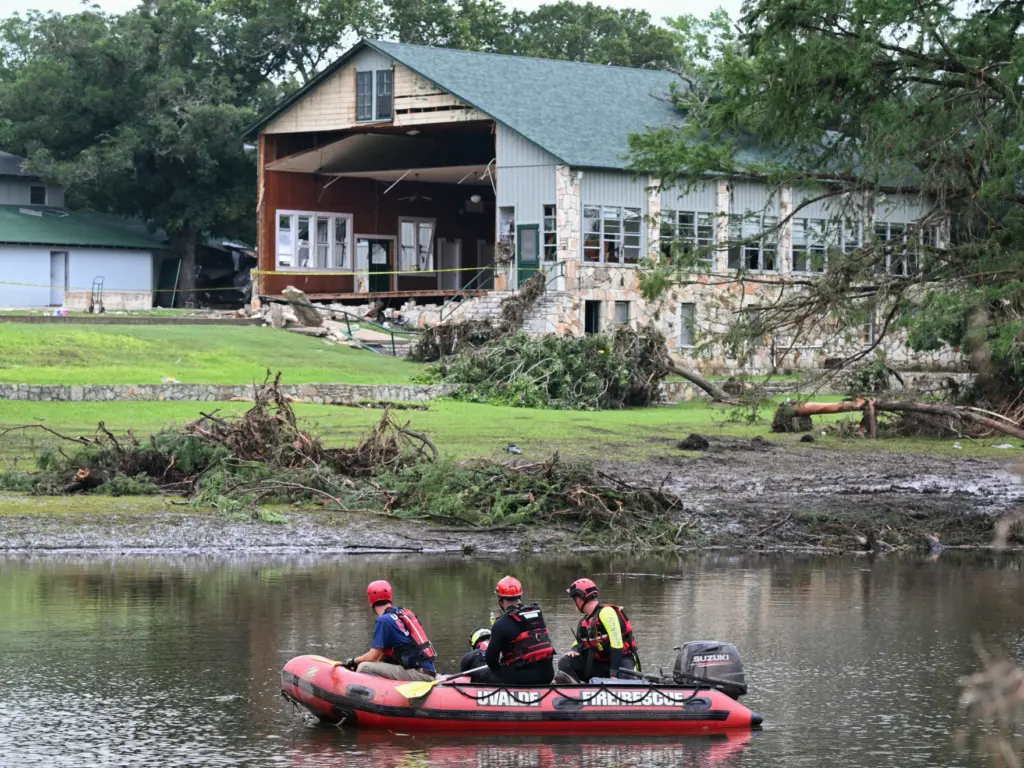Asleep at the Wheel? FEMA Floodplain Reprieves? Ignorant Officials… A Perfect Recipe for Disaster … Part 2
Commentary by Gloria Way
When natural disasters occur and Mother Nature shows her ugliest side, dealing with the aftermath usually consists of what first responders refer to as “lessons learned”. What this means is that when all is said and done, officials and first responders discuss what happened, what could have lessened the impact and saved lives, and what can be done better.
Nothing can bring back the innocent lives that were lost that early morning of July 4th. Nothing can help responders and volunteers unsee the horrors they saw searching for victims. Nothing can take away the agony felt by the survivors. And nothing can ease the depth of the grief and heartbreak of the victims’ families.
The sad irony lies in the fact that the tragedy of July 4th could have been mitigated where loss of life could have been lessened. The flash flood could not have been prevented, and the damage could not have been prevented. It was truly an act of God. But fewer lives could have been lost if local officials paid attention.
First and foremost, FEMA flood maps. Why were two Camp Mystic cabins in the floodplain? Each cabin had a counselor and between 10 -15 seven- and eight-year girls. The youngest campers were in the most vulnerable positions for flooding. All the girls and counselors died.
- Camp Mystic owners, Tweety and Dick Eastland, were granted multiple “reprieves” from FEMA flood‑map restrictions, undercutting oversight that would have required insurance and tighter controls in flood‑prone areas. Experts like Syracuse University Associate Professor Sarah Pralle criticize FEMA’s appeal system, noting it often benefits affluent property owners and can reduce crucial safeguards. These FEMA-approved map amendments gave Camp Mystic relief from regulations and likely reduce oversight. Pralle, who has extensively studied FEMA’s flood map determinations, said it was “particularly disturbing” that a camp in charge of the safety of so many young people would receive exemptions from basic flood regulation.
- Critics argue that this lowered protection levels at a site known to be in “flash flood alley” – and that climate driven intensification of flooding makes such exemptions particularly perilous.
Secondly, Texas A&M University is home to Texas A&M University Engineering Extension Service (TEEX). It originated in 1948 and became part of the TAMU system in 1948. TEEX is an internationally recognized leader in emergency response training, workforce training, and technical assistance.
- Why is TEEX important? TEEX saves lives through training. TEEX trains firefighters, law enforcement, public works professional, and utility operators, and cyber responders, equipping them to prepare for, responds to, and recover from emergencies. Its practical, hands-on instruction makes training realistic and mission critical.
- TEEX provides state-funded training and technical assistance directly to communities.
- TEEX delivers DHS/FEMA certified courses across all 50 states often at no cost to eligible participants – covering homeland security, rescue operations, cyber preparedness, and more.
Thirdly, what key local officials were doing as the rains descended on Kerr County remains unclear. The absence of information about their actions overnight raises critical questions about whether officials in Kerr County missed potentially life-saving steps during the two hours between 1:14am, when the National Weather Service issued the flash flooding warning and when the Guadalupe River surged. State Senator Charles Perry, R-Lubbock, expressed frustration with the county’s response after hearing testimony from Texas Department of Emergency Services Director Nim Kidd and statewide emergency officials. “It seems to me, the more I’m listening to this today, they really don’t have an emergency coordinator team,” he said of Kerr County.
- Kerr County Judge Rob Kelly as county judge is the director of Kerr County’s Office of Emergency Management. Kelly is the one to make the call to active the OEM and respond to the warnings being delivered by the National Weather Service and the state. A warning means the event is occurring or is imminent and you should take immediate steps to protect yourself and your family. Asked why the camps had not been evacuated, Kelly said, “I don’t know.”
In summary, the federal government allowed local jurisdictions to appeal and overturn FEMA floodplain maps. By doing so, Camp Mystic was relieved of some regulations and likely reduced oversight. Records show that the only entity that appealed the FEMA floodplain maps were Tweety and Dick Eastland, owners of Camp Mystic.
Kerr County officials were asleep at the wheel literally and figuratively. The county judge of Kerr County, the mayor of Kerrville, the city manager of Kerrville, and the office of emergency management had no coordinated plan in place to respond to such an event even though the Texas hill country and the Guadalupe River is prone to flooding. No one paid attention to the warnings issued by the National Weather Service.
And, apparently, Kerr County did not take advantage of the expertise and training offered by TEEX. Texas Department of Emergency Management (TDEM) is available for disaster response training and apparently, neither the state nor Kerr County officials made sure Kerr County was up to date on training on how to respond to a flooding disaster.
The July 4th flood should be at the top of the list of horrific tragedies that could have been lessened if the people in charge had just done their jobs. And the stupidity of placing seven- and eight-year-old girls in cabins in the middle of the floodplain should never have been allowed. The complete lack of regard for these young girls’ lives is staggering.
Over 130 lives were lost. We must never forget.

A search and rescue team in a raft looks for people along the Guadalupe River near a building that is missing an exterior wall at Camp Mystic in Hunt, Texas, following severe flash flooding that occurred during the July 4th holiday weekend.